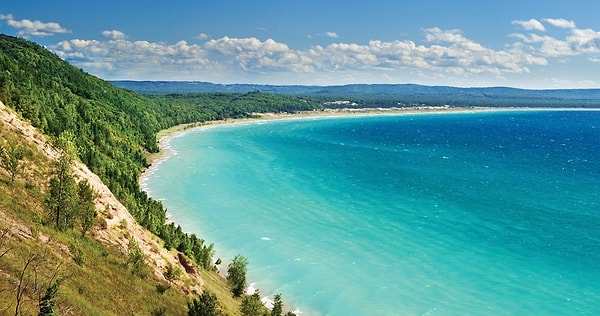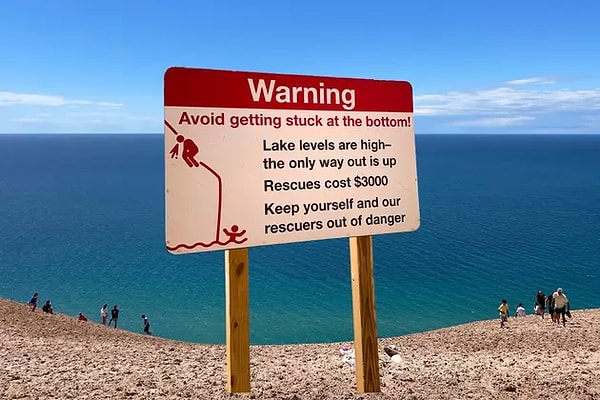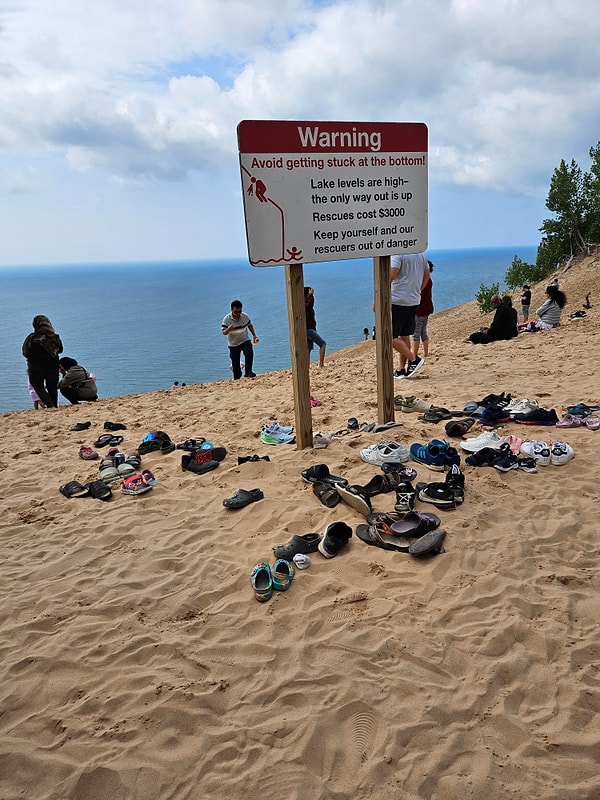An Interesting US Coast Where Entry is Free and Exit Costs $3,000
In most national parks across the United States, things usually run smoothly. If you encounter any trouble, a simple call for help will do the trick. However, the situation is somewhat different at the Sleeping Bear Dunes beach in Michigan. While the scenery is captivating, the return journey can turn into a nightmare for visitors. This is because rescuing those who give up during the climb can sometimes cost thousands of dollars. Here's the story of that infamous $3,000 rescue operation that everyone's been curious about...
Situated along the shores of Lake Michigan, Sleeping Bear Dunes National Lakeshore boasts an impressive coastline that stretches for approximately 35 miles.

The most striking feature of the region is the giant sand dune towering 137 meters above the lake level. The view of the lake from the summit is breathtaking, but the real challenge begins on the descent.
Some visitors, driven by a thirst for adventure, descend the hill but find themselves unable to climb back up. The path leading down to the shoreline is nearly vertical, boasting a steep incline of 33%. As the entire surface is made up of soft sand, footsteps sink into it, and there is no opportunity to rest in the shade.
Nevertheless, many people, captivated by the view, choose to descend and eventually have to resort to calling rescue teams for assistance.
The teams stationed at Sleeping Bear Dunes respond to a significant number of distress calls every year.

Park rangers often rush to help, armed with nothing more than water and food supplies. If the water level is low and the shore is wide enough, they can even reach the scene by vehicle. However, the situation changes when the ground or weather conditions are not favorable.
In certain circumstances, complex rope systems or the support of fire crews may be required. At times, the only option might be a rescue by sea. This is when local fire departments or coast guards step in, and the cost begins to escalate rapidly.
Although park authorities point out that the National Park Service typically does not charge for rescue, external teams involved in the operations at Sleeping Bear Dunes may request a fee for their services. Consequently, the cost of calling for help can skyrocket up to $3,000.
The general policy of the U.S. National Park Service is not to charge for emergency rescue situations.

The cost of operations is covered by the annual budget, with volunteer teams frequently stepping in to lend a hand. However, in areas like Sleeping Bear Dunes, there are times when the support of local institutions becomes necessary. If the fire department or marine police are called in for a rescue, these entities may charge for their services.
Authorities are consistently issuing warnings to prevent visitors from finding themselves in such predicaments. Signs stating 'If you go down, you may not be able to get back up' are scattered throughout the park. Despite these warnings, some visitors tend to underestimate the risks involved.
Keşfet ile ziyaret ettiğin tüm kategorileri tek akışta gör!

Send Comment